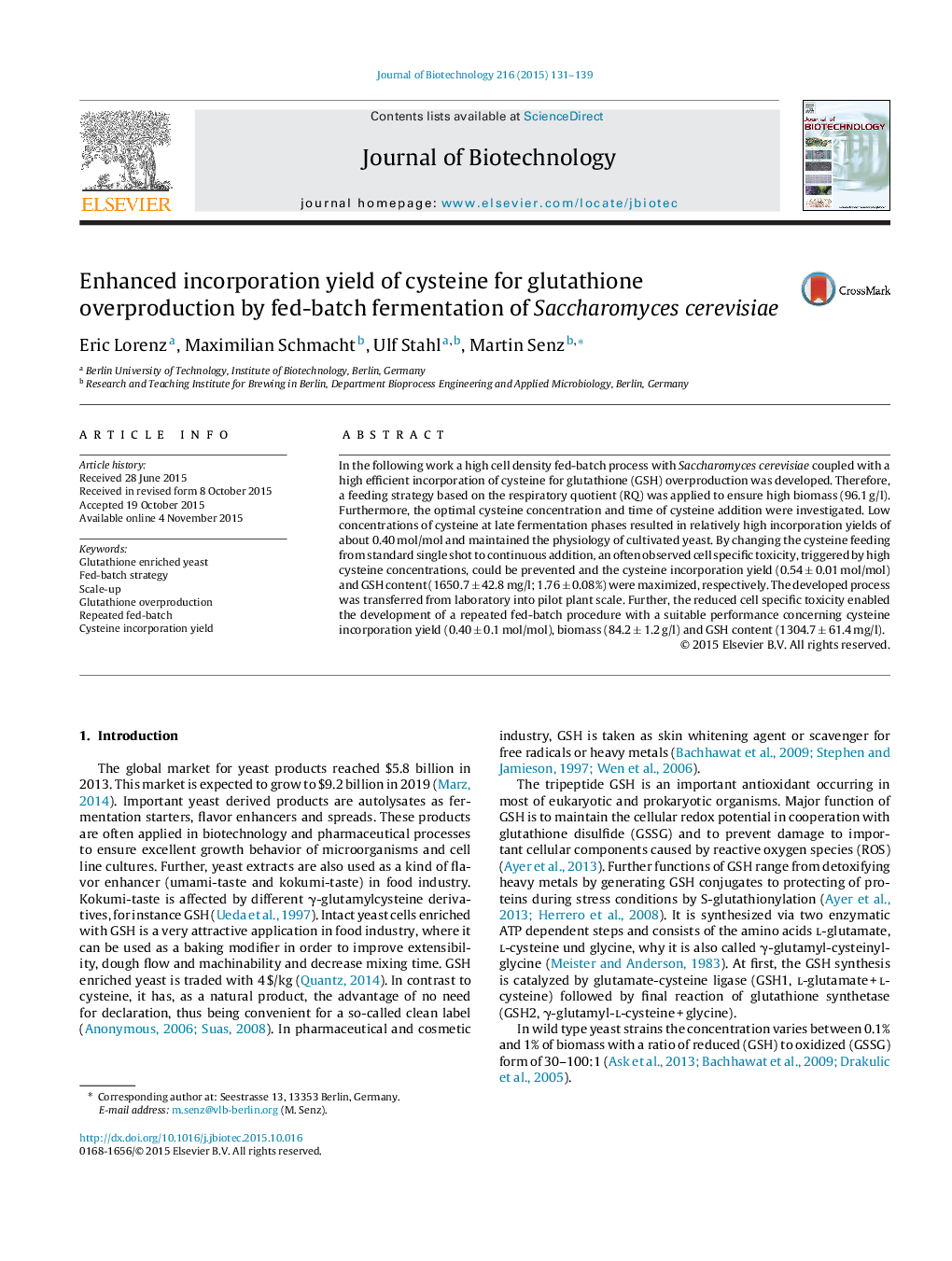| Article ID | Journal | Published Year | Pages | File Type |
|---|---|---|---|---|
| 22782 | Journal of Biotechnology | 2015 | 9 Pages |
•A feeding strategy via RQ-control for HCD in S. cerevisiae was developed.•The best performing fermentation process was transferred into a pilot plant.•A repeated fed-batch process with continuous cysteine feeding is demonstrated.•Continuous cysteine feeding leads to highest GSH/cysteine yields and biomasses.•Highest performance in GSH production was 1651 ± 43 mg per liter broth after 36 h.
In the following work a high cell density fed-batch process with Saccharomyces cerevisiae coupled with a high efficient incorporation of cysteine for glutathione (GSH) overproduction was developed. Therefore, a feeding strategy based on the respiratory quotient (RQ) was applied to ensure high biomass (96.1 g/l). Furthermore, the optimal cysteine concentration and time of cysteine addition were investigated. Low concentrations of cysteine at late fermentation phases resulted in relatively high incorporation yields of about 0.40 mol/mol and maintained the physiology of cultivated yeast. By changing the cysteine feeding from standard single shot to continuous addition, an often observed cell specific toxicity, triggered by high cysteine concentrations, could be prevented and the cysteine incorporation yield (0.54 ± 0.01 mol/mol) and GSH content (1650.7 ± 42.8 mg/l; 1.76 ± 0.08%) were maximized, respectively. The developed process was transferred from laboratory into pilot plant scale. Further, the reduced cell specific toxicity enabled the development of a repeated fed-batch procedure with a suitable performance concerning cysteine incorporation yield (0.40 ± 0.1 mol/mol), biomass (84.2 ± 1.2 g/l) and GSH content (1304.7 ± 61.4 mg/l).
